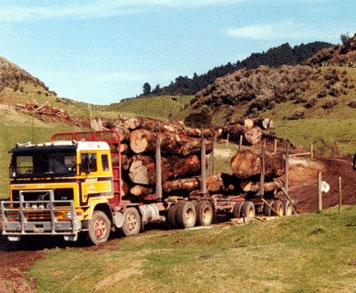Non Point Source Pollution in the Forest
Nearly 500 million acres of forested lands are managed for the production
of timber in the United States. Although only a very small percentage of
this land is harvested each year, forestry activities can cause significant
water quality problems if improperly managed. The latest National Water
Quality Inventory reports that forestry activities contribute to approximately
9 percent of the water quality problems in surveyed rivers and streams.
Sources of NPS pollution associated with forestry activities include
removal of streamside vegetation, road construction and use, timber harvesting,
and mechanical preparation for the planting of trees. Road construction
and road use are the primary sources of NPS pollution on forested lands,
contributing up to 90 percent of the total sediment from forestry operations.
Harvesting trees in the area beside a stream can affect water quality by
reducing the streambank shading that regulates water temperature and by
removing vegetation that stabilizes the streambanks. These changes can
harm aquatic life by limiting sources of food, shade, and shelter.





